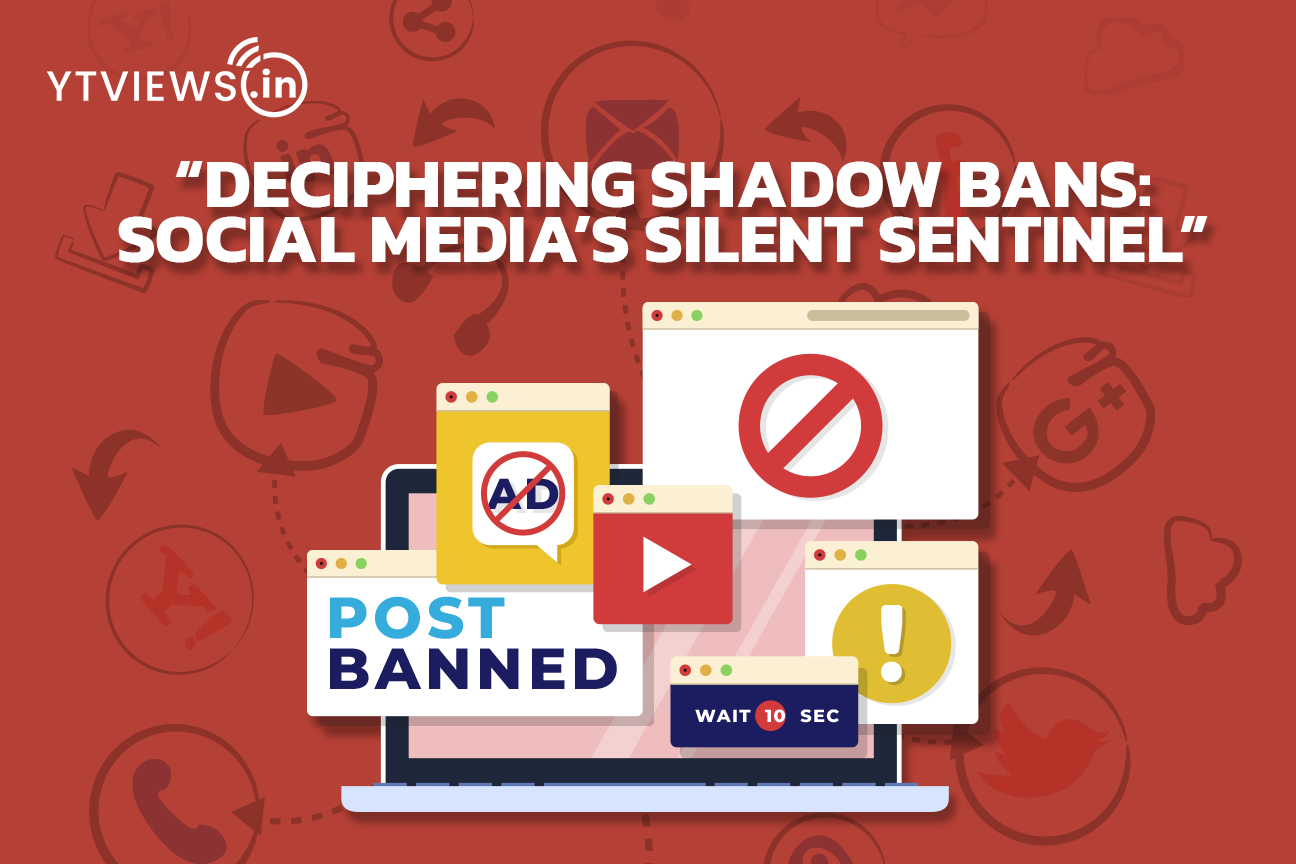“Deciphering Shadow Bans: Social Media’s Silent Sentinel”
 Social media platforms have recently come under fire for a practice known as “shadow banning,” a form of censorship that limits the reach of certain posts without users being aware of it. But what does this mean? How can we tell if our posts are affected by shadow banning? What measures can be taken to avoid it? This article will explore these questions, aiming to help you better understand what shadow banning is and how it impacts social media users.
Social media platforms have recently come under fire for a practice known as “shadow banning,” a form of censorship that limits the reach of certain posts without users being aware of it. But what does this mean? How can we tell if our posts are affected by shadow banning? What measures can be taken to avoid it? This article will explore these questions, aiming to help you better understand what shadow banning is and how it impacts social media users.
Are you familiar with the term “shadow banning” when it comes to social media posts? If not, you’re not alone. Shadow banning is a relatively new concept that many people don’t yet know about. In fact, it’s so new that even some of the major social media platforms are still working out how to implement it.

Shadow banning is essentially a way for social media networks to limit the reach and visibility of certain posts without making them completely invisible. This allows companies to reclaim control over what users can and cannot see on their networks while maintaining an appearance of neutrality. Rather than deleting or blocking certain postings outright, shadow banning works by limiting their visibility in news feeds or search results. This way, users may not be able to find certain content even if they’re searching for it directly – something many belief is a form of censorship.
Shadow banning occurs when a user posts content that is deemed inappropriate or contrary to the community standards and rules of the platform. The post remains on the site but is filtered out of public view, meaning it will not appear in people’s newsfeeds or searches.
With shadow banning, users are generally unaware of their content being blocked since they cannot see it themselves; their account appears to be functioning normally except that their reach is limited. This makes it difficult for individuals to know when they have been restricted or censored by social media platforms such as Twitter and Facebook. Critics argue that this form of censorship can have a detrimental impact on freedom of speech and expression online, while proponents defend its use as necessary for keeping malicious content off these sites.
In conclusion, it is clear that the shadow banning of social media posts is a complex issue, with potential effects on both the publisher and the consumer. It can be a useful tool for managing content and preventing abuse on social media platforms, while also allowing users to express their opinions without fear of censorship or retribution. At the same time, it is important to recognize that this kind of censorship can have serious implications for freedom of speech and could even lead to unintended consequences.
Related Posts

Instagram Implements Advanced Protections for Teen Users.

5 Skills to Become a Successful Social Media Marketer

LinkedIn Adds AI Training Opt-out Option

What Video Editing Software Do Youtubers Use in 2024?

How VoIP Services are changing the Way We Make Calls






































